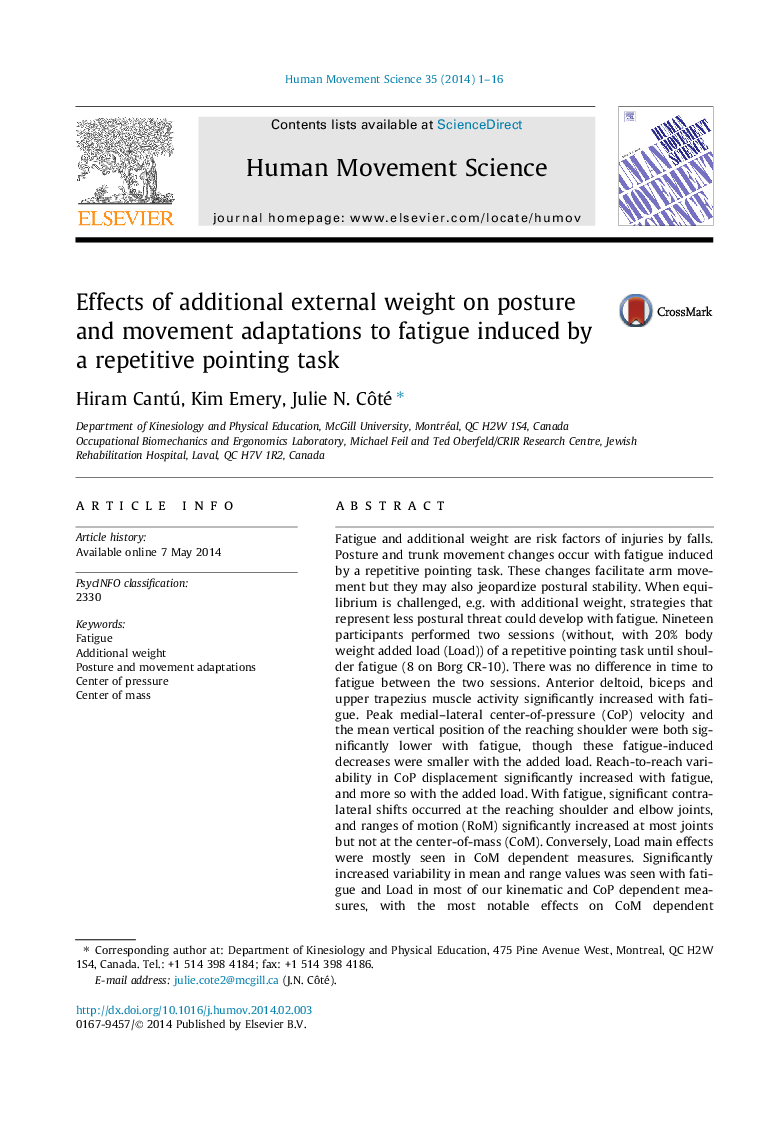| Article ID | Journal | Published Year | Pages | File Type |
|---|---|---|---|---|
| 928305 | Human Movement Science | 2014 | 16 Pages |
•We studied adaptations to repetitive pointing induced fatigue with added body load.•We recorded kinematic, kinetic and EMG data during a repetitive pointing task.•Increased EMG and perceived exertion showed that shoulder fatigue was induced.•Fatigue affected joint movements; added weight affected center of mass kinematics.•Findings suggest that adjustments to fatigue and added weight occur in parallel.
Fatigue and additional weight are risk factors of injuries by falls. Posture and trunk movement changes occur with fatigue induced by a repetitive pointing task. These changes facilitate arm movement but they may also jeopardize postural stability. When equilibrium is challenged, e.g. with additional weight, strategies that represent less postural threat could develop with fatigue. Nineteen participants performed two sessions (without, with 20% body weight added load (Load)) of a repetitive pointing task until shoulder fatigue (8 on Borg CR-10). There was no difference in time to fatigue between the two sessions. Anterior deltoid, biceps and upper trapezius muscle activity significantly increased with fatigue. Peak medial–lateral center-of-pressure (CoP) velocity and the mean vertical position of the reaching shoulder were both significantly lower with fatigue, though these fatigue-induced decreases were smaller with the added load. Reach-to-reach variability in CoP displacement significantly increased with fatigue, and more so with the added load. With fatigue, significant contralateral shifts occurred at the reaching shoulder and elbow joints, and ranges of motion (RoM) significantly increased at most joints but not at the center-of-mass (CoM). Conversely, Load main effects were mostly seen in CoM dependent measures. Significantly increased variability in mean and range values was seen with fatigue and Load in most of our kinematic and CoP dependent measures, with the most notable effects on CoM dependent measures. Findings suggest that the postural control system adapts to combined perturbing factors of fatigue and added load, likely by using parallel control mechanisms.
